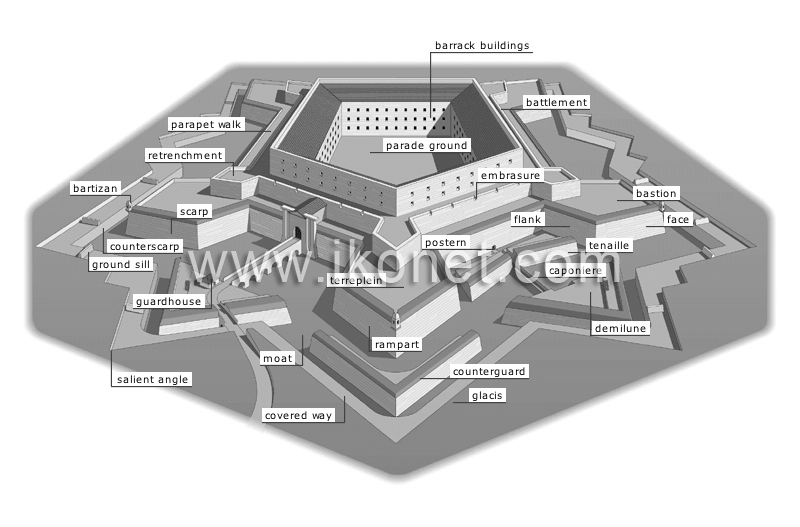Introduction
The Fortification mental model is rooted in the concept of fortifying or strengthening one’s decision-making process through adaptive thinking and flexibility. Anchored in human psychology, this model recognizes the importance of being open to new information, challenging assumptions, and adjusting strategies in response to changing circumstances. Understanding and applying the Fortification mental model can help individuals make more effective decisions that align with their best interests. In this blog post, we will explore the concept of Fortification, its relevance in decision-making, real-life examples, underlying biases, strategies for identification and avoidance, and the significance of active engagement with this mental framework.
Defining Fortification and Its Relevance in Decision-Making
Fortification is a mental model that emphasizes the importance of adaptability and flexibility in decision-making processes. It recognizes that decisions are often made in dynamic and uncertain environments, requiring individuals to fortify their thinking by incorporating new information, adjusting strategies, and challenging preconceived notions.
This mental model is highly relevant in decision-making as it helps individuals overcome biases, avoid stagnation, and remain responsive to changing circumstances. By fortifying their decision-making process, individuals can improve their ability to navigate complex situations, identify new opportunities, and achieve optimal outcomes.
Occurrence of Fortification in Various Contexts
Personal Life Decisions:
Consider a person making a significant personal life decision, such as choosing a life partner. By fortifying their decision-making process, they would remain open to new information, challenge their initial assumptions, and consider a range of factors such as compatibility, shared values, and long-term goals. By being flexible in their approach, they increase their chances of making a more informed and satisfying decision.
Business Scenarios:
In a business context, the Fortification mental model is applicable when developing strategies and making strategic decisions. For example, a company that is faced with changing market dynamics and evolving customer preferences can fortify its decision-making process by regularly gathering market intelligence, monitoring trends, and adapting its strategies accordingly. By remaining open to new information and adjusting their approach, companies can maintain their competitiveness and seize emerging opportunities.
Public Policy-Making:
Governments and policymakers can also benefit from applying the Fortification mental model. When formulating public policies, they should actively fortify their decision-making by considering feedback from experts, conducting rigorous research, and regularly evaluating the impact of policies. By remaining adaptable and responsive to changing societal needs and conditions, policymakers can develop policies that better serve the public interest.
Mental Biases and Underpinnings
Several mental biases contribute to the need for Fortification:
Confirmation Bias: Confirmation bias leads individuals to seek information that confirms their pre-existing beliefs or preferences while disregarding conflicting information. Fortification helps individuals challenge their biases by actively seeking out diverse perspectives and considering alternative viewpoints.
Status Quo Bias: The status quo bias is the tendency to favor maintaining the current state of affairs or sticking to familiar routines. Fortification combats this bias by encouraging individuals to question the status quo, explore new possibilities, and embrace change when it aligns with their best interests.
Identifying and Mitigating the Fortification Fallacy
To avoid falling into the Fortification fallacy, individuals can employ the following strategies:
Foster Intellectual Curiosity: Cultivate a mindset of curiosity and a thirst for learning. Seek out diverse sources of information, engage in continuous education, and actively seek different perspectives. This helps expand your knowledge and challenge your assumptions.
Embrace Feedback and Constructive Criticism: Be open to receiving feedback and constructive criticism from others. Actively seek input from trusted individuals who can provide diverse viewpoints and challenge your thinking. Embracing feedback helps you identify blind spots and make more informed decisions.
Develop Scenario Thinking: Practice scenario planning by considering multiple possible outcomes and their implications. This helps you prepare for various contingencies and enhances your ability to adapt and adjust your decisions when necessary.
Conclusion
The Fortification mental model serves as a valuable tool for decision-making by promoting adaptability, flexibility, and an openness to new information. By fortifying their decision-making process, individuals can overcome biases, challenge assumptions, and make more informed choices. Through real-life examples, we have seen how individuals and organizations can fall into the Fortification fallacy, making irrational decisions that go against their best interests. By understanding the underlying biases and employing strategies for identification and mitigation, individuals can enhance their decision-making process and achieve better outcomes. Actively engaging with the Fortification mental model empowers individuals to fortify their thinking, navigate uncertainty, and make more effective decisions.
